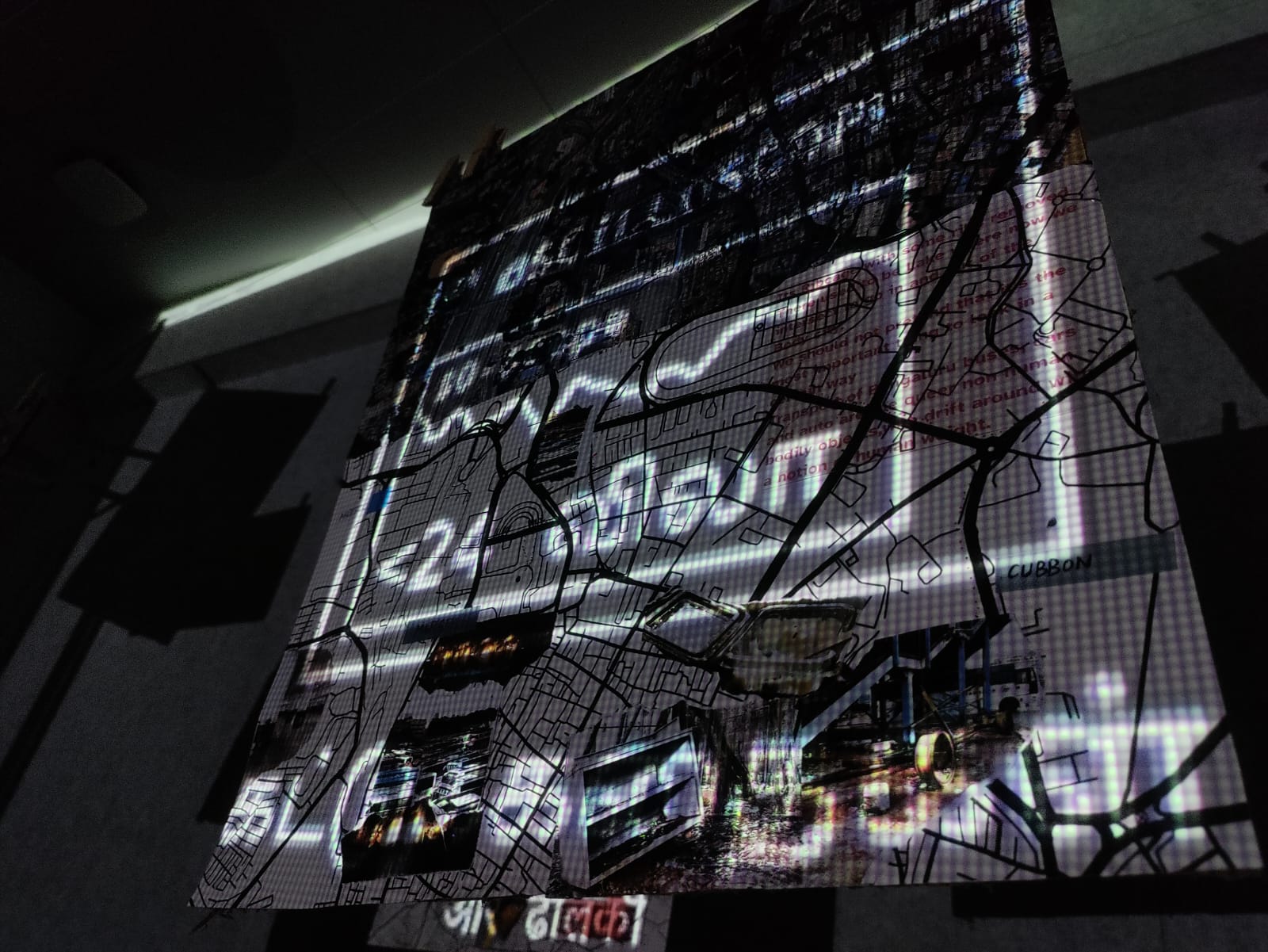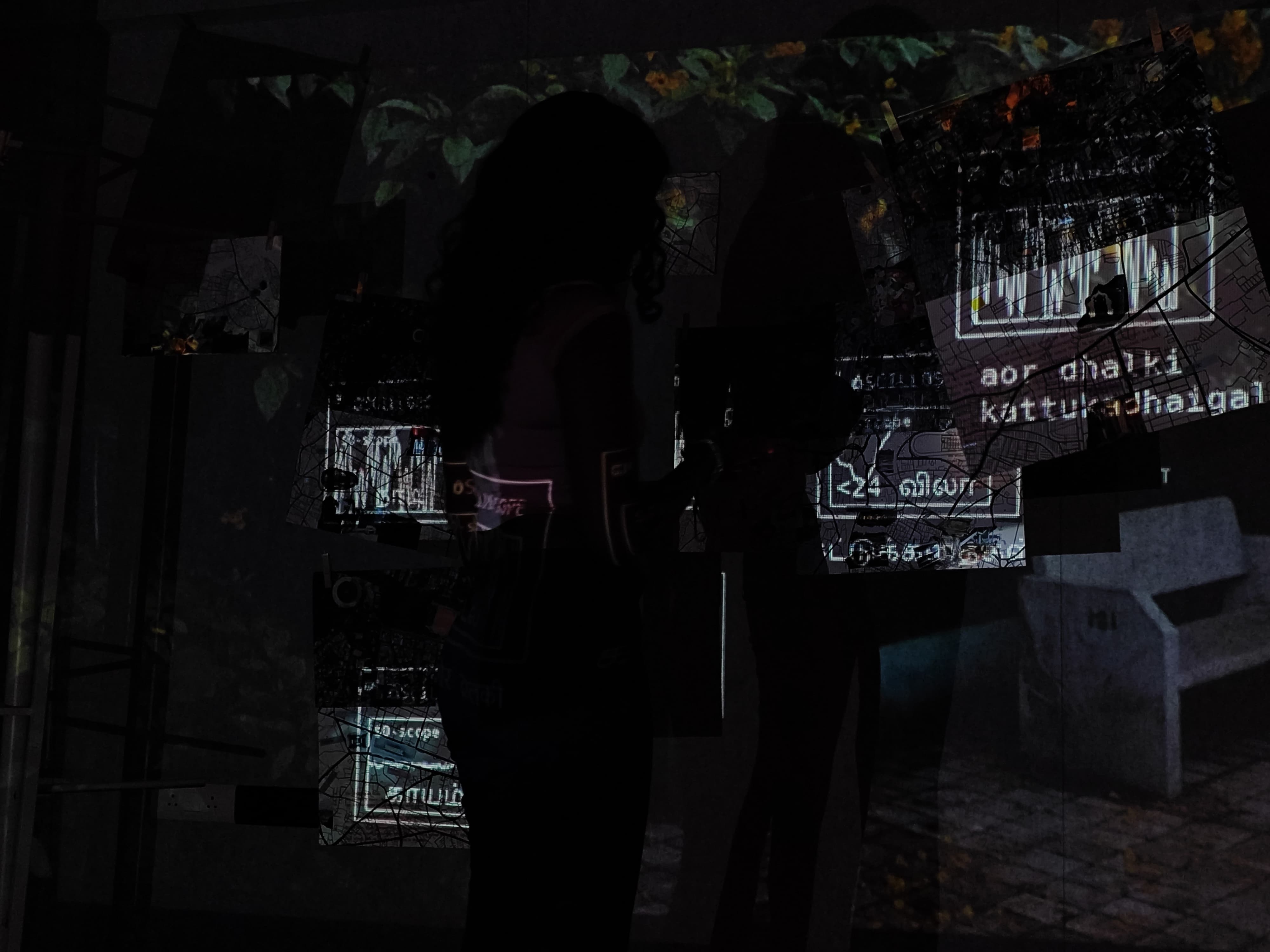
और ढालकी கட்டுக்கதைகள் | aor dhalki kattukadhaigal
और ढालकी - of another type; variant; deviant; different; queer.
கட்டுக்கதைகள் - கட்டு + கதைகள்; build/tie/stack/bring together + stories; stories which bring together; built stories; myths; tales; fables; lies; truths.
This project is an attempt to read, and excavate, the queerness in the geography of Bengaluru. This is an attempt not to read queerness into the city’s landscapes, but to sit with the queerities already present in Bengaluru, and bring it out using psychogeographic methods. We have focused on historic queer events in the city, contemporary queer realities, and on aesthetic/somatic/metaphorical queernesses which have emerged on our drifts through the city. We layer our personal negotiations with these aspects of the city onto a reading of “Queer Natures, Queer Mythologies”, a collection arranged from the works of the late Sam See. We work through ideas of truth, reality, lies, nature, emotion, mythologising, community building, difference, desire, and intuition. We attempt to “reckon with the ‘somatic nature of queerness’”, and in doing so read queer bodies and queer city together, negotiate ‘myth’ as ‘reality’, consider ‘body’ as ‘city’, and bring out the queerness in our psychic and physical geographies.


Again, attempting to “reckon with the ‘somatic nature of queerness’”, this project dissolves the constructed boundaries separating ‘body’ from ‘city’, ‘myth’ from ‘reality’, and ‘mind’ from ‘body’, and in doing so, reads the myriad inhabitations of queerness in our combined physical and psychic geographies, that is, the ‘citybody’
Consider this quotation extracted from page 297 in ‘Queer Natures, Queer Mythologies’:
“See focuses on the book’s final sentence— “There it is said that the desire to lie with other women is a drive from the mother’s blood.” He writes,
Though ostensibly an essentialist claim— one that sounds very much like I was born this way— this sentence actually propounds a mythic claim about the somatic nature of queerness. As she has all along with Carriacou lore, Audre acknowledges that this idea is a legend— “there it is said”— even as she places this sentence directly after her realization that she has “discovered” Carriacou’s “latitudes”: that she has found a way to root her belief in what constitutes “home.” What constitutes home, for this queer woman, is naturally encoded in “the mother’s blood”: “the desire to lie with other women.” “Lie” here functions polysemously, as Audre relates how her relationships with women often ended on the basis of lies, exemplified by her relationship with Muriel. But, just as myths are lies that tell the truth, so too do these lies tell the truth of queerness’ nature: It is a lie about “the blood” that tells the truth about “desire.”
For See, myth is a lie that tells the truth, and tells it in the medium of blood. If arguments against essentialism are effective in disrupting reductive and pathologizing taxonomies, they produce other forms of damage by failing to reckon with the “somatic nature of queerness.”
Reading closely with this text, we attempt to represent our understanding of the somatic nature of queerness in the citybody, using the mediums of generative visuals and sound, still film and audio field recordings, cartographies layered with text and image, and projection. The installation was laid out with the text layered cartographies hanging at various heights and depths, the field recordings being projected onto the entirety of these hangings, breaking the film down across the space. The generative visuals and sounds were further layered on top of this, with another projector positioning the visualisations of varied sonic elements onto the hanging text/map layerings. The sounds from both the field recordings and the generative layer interacted in new ways throughout the duration of the installation, creating new soundscapes with every viewing.
The video and audio field recordings come from our days drifting, capturing landscapes, sounds, and objects which were tied to the queer themes we were grappling with, both spatially, emotionally, and metaphorically. The text and map layerings carried the geographical representations of the spaces we captured field recordings from, providing further context through pictures, and bringing out the queer narratives we felt through creative annotations. The generative visuals and sounds were mapped, through projection, onto the text layered cartographies following these queer narratives. Each ‘oscillator’ box was a visualisation of a particular sound corresponding to the particular narrative of a space, positioned onto particular text layered cartographies. Each sound was procedurally generated by using the program Pure Data, each component attuned to represent the chosen queer narratives. The list below specifies each:
cubbon - நாடி (arteries) - bird sounds
mg road - காயம் (injury) - construction noises, renovation
majestic - 24 விலா (ribcage with a few ribs removed) - traffic noise
central blr - உடல் (body) - all together
jp nagar - 10தாம் கை (10th hand) - muffled speech